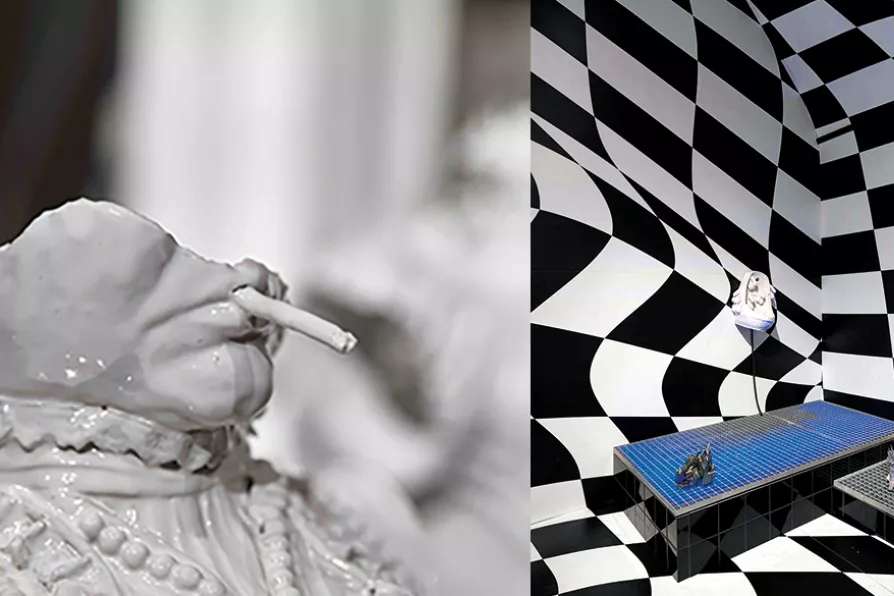MARIA DUARTE picks the best and worst of a crowded year of films

 Lindsey Mendick: I Tried So Hard To Be Good; SH*TFACED installation view
[John Mackenzie]
Lindsey Mendick: I Tried So Hard To Be Good; SH*TFACED installation view
[John Mackenzie]
Exhibition review Lindsey Mendick: SH*TFACED; Grayson Perry: Smash Hits
Jupiter Artland; National Galleries of Scotland: Royal Academy
IT’S not every art exhibition that begins with a heath warning. But with Lindsey Mendick’s new “confessional show,” the clue is in the name. A rather stylish plaque tells us that the venue “condones a sensible approach to the use of alcohol,” warning that the “scenes of binge drinking” depicted in SH*TFACED could be “challenging.”
This is one of several shows at this year’s Edinburgh Art Festival which grapple with shame, repression and defiance.
Mendick’s exhibition spans across three spaces within Jupiter Artland, a private sculpture park and contemporary art gallery on the estate of a Jacobean country house in Kirknewton, West Lothian. Its first rooms take the form of a nightclub and adjoining toilets. Distorted chequered walls and a soundtrack of club sounds disorientate us before we are confronted with an expansive and intricate scale model of the club we believe we are already within.

KEN COCKBURN assesses the art of Ian Hamilton Finlay for the experience of warfare it incited and represents

CHRIS MOSS relishes the painting and the life story of a self-taught working-class artist from Warrington












